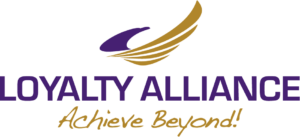Even if you’re not a marketing pro, you’ve likely heard the terms “Martech,” “Martech Stack,” and Marketing Technology. Generally, these terms refer to a combination of typically cloud-based technologies that enable marketers to automate repetitive marketing tasks, create scale, optimize resources, and track and analyze marketing campaigns.
Marketing technologies run the gamut regarding features, functions, and cost, as with most technologies. For example, many entrepreneurs are familiar with popular Martech tools such as MailChimp, HubSpot, and Salesforce. What they may not know, however, is the vast difference in the value they provide and the associated costs.
Some entrepreneurs can afford and derive value from the top tools and can create a stack – a combination of complementary tools – to meet their businesses’ needs. On the opposite end of the spectrum, others struggle to find and choose the best tool or combination of tools to meet their needs.
In this post, I will highlight the one tool every entrepreneur needs in their stack – even if it is the only tool they can afford or support.
And the winner is…
Marketing Automation.
What is Marketing Automation and Why is it Number One?
Simply put, marketing automation tools enable entrepreneurs to automate repetitive marketing tasks to such an extent that you can practically “set it and forget it” until you have qualified leads to show up in your inbox!
As I mentioned earlier, there are many types of marketing automation tools that offer different features and functionality and different costs. As you’d imagine, the more features and functions, the greater the cost.
Most of these tools focus on email automation, while others include automated texting, website messaging, lead collection forms, landing pages, social media, and more. The more full-featured/costly automation tools (a few of which I discuss below) include some version of CRM – customer relationship management – also a critical tool but one which deserves its own examination.
Without a doubt, I have found e-mail marketing automation to be the number one marketing technology for entrepreneurs. Marketing automation platform HubSpot concurs as they recently found that email ROI is an impressive $36 for every dollar spent.
That’s not to suggest that entrepreneurs only invest in email automation, just that it is the one feature you cannot live without.
At the core of email marketing automation is the creation of automated campaigns, which are best described via the example below.
I recently created a campaign targeting CEOs, Presidents, and Vice Presidents in the financial services, nonprofit, and service industries. It featured a series of three emails promoting an individual’s expertise. Here are the other details of the campaign:
- The emails were written, designed, and entered into the marketing automation system, including the variables of “first name” and “company name,” which would be dynamically inserted into the emails when sent.
- I then created workflows for emails #1 – 3 in the tool, which included the various branches and timing.
- Each email was set only to be sent to each contact on the list once to eliminate the possibility of receipt of duplicate emails.
- Contact names were included in a new list in the marketing automation tool.
- Specific contacts already in the tool were suppressed to avoid receiving the email.
- Emails were tested and then scheduled.
- Email #1 was scheduled to be sent to approx. 1,500 contacts.
- Email #1a, utilizing a different subject line but the same content as email #1, was scheduled to be sent to everyone who did NOT open email #1 three business days after Email #1 was sent.
- Email #2 was scheduled to be sent to everyone who opened email #1 five business days after they opened email #1.
- Email #2 was scheduled to be sent to everyone who received email #1a five business days after they received email #1a.
- Email #3 was scheduled to send to everyone who received email #2 5 business days after they received email #2.
As you can see, there was time put in up front, but once the steps above were completed, the campaign was completely automated except for analyzing the data at critical points.
Examples of Marketing Automation Platforms
As I mentioned above, there are many marketing automation tools, including email and other features and channels.
An excellent way to discover these tools is to use technology reviewers such as Forrester, Gartner, G2, and Trust Radius. Forrester and Gartner are companies that provide technology consulting and regularly rank tools they find to be “best” utilizing proprietary methodologies. You typically have to pay for their reports (some vendors these companies rank provide report excerpts for free, which are valuable in and to themselves.) G2and Trust Radius are review sites where people like me provide objective reviews and commentary; the results are then compiled and ranked.
Since you can easily access the review sites, I’m just going to provide a few examples of marketing technology platforms that feature email automation at different levels of features/functions and price points. Please note that I have had hands-on experience with every tool mentioned in this post. There are MANY other tools you can find on the review sites; I narrowed my search down to the ones mentioned (and a few more) based on my business’s requirements and budget, which is what I recommend that every entrepreneur does.
MailChimp – At the lower end of the spectrum, you can find MailChimp. Don’t be fooled by the price; MailChimp is a proven, robust platform for entrepreneurs with limited budgets and needs. As of the writing of this post, MailChimp’s pricing ranges from free to $299 per month. At each service level – Free, Essentials, Standard and Premium – there are various limits, so pay close attention to the number of emails sends, contacts, interactions, users, etc. that are included for, as you’d imagine, the more you add, the greater the cost. This is the case with all the tools I referenced, though you will find that the minimums are much higher with the higher-cost tools – a significant consideration for comparison.
With MailChimp, the Standard level is where I would start as you consider minimal marketing automation features. It is important to note that the more features and functionality you acquire in MailChimp, the more there will be to learn and keep up with. Regardless, if you are a small company with minimal resources, MailChimp is a solid choice.
SharpSpring – At the higher end of the spectrum, several marketing automation tools have all the features and functions I mentioned above. Along with SharpSpring are Pardot, Act-On, Marketo, Keap (formerly Infusionsoft), and HubSpot. I’m spotlighting SharpSpring as the choice I made to go “all in” with, as I utilized it for my business and clients. SharpSpring is a powerful marketing automation platform with all the features I referenced above (except automated texting) and a decent, entry-level CRM. I chose SharpSpring due to its cost-to-value relationship and ease of use. A big plus was that I found their customer service to be top-notch as well.
As of the writing of this post, SharpSpring has four service levels based on the number of contacts which range from $449 – $1449 and higher for an enterprise-level plan. Since SharpSpring markets aggressively to agencies, it is possible that entrepreneurs can decrease their costs for SharpSpring by purchasing it through an agency. That gives you the added benefit of having a resource to create and manage your campaigns.
Having a resource is a crucial point. Although SharpSpring is relatively easy to learn and use, it does take time to set it up, learn to use it efficiently, and create, manage and track your campaigns. Even if entrepreneurs focus on email, you will need a resource to devote significant time to learning and to manage SharpSpring (or any full-featured marketing automation tool, for that matter.)
HubSpot – IMHO, HubSpot is the most advanced and complete-featured marketing automation platform – kind of the Salesforce of marketing automation tools. While you may find one or more outlying features or functions that another of the top platforms have that HubSpot does not, you’ll find HubSpot has it all for the most critical and robust features and functions. I didn’t choose HubSpot because I didn’t think all the extras it had were worth the cost – this is the cost-to-value relationship I referred to above.
The other thing to mention about HubSpot is that if you are an agency, they provide resources to help you grow using HubSpot, which is something to consider when choosing where to invest your marketing automation budget.
HubSpot’s pricing is from its $45/month “Starter” service level to $3,200+ a month for enterprises. Unlike SharpSpring, HubSpot’s pricing is based on contacts, so look carefully at all the pricing details.
Conclusion
Many of my peers, particularly those with a sales bent, will tell you that CRM would be their choice if they had to choose one marketing technology. While I cannot disagree about the importance of CRM, the way I look at it is if there are no prospects or leads to track, there isn’t much of a need for a CRM; that is one of the reasons I consider marketing automation to be the number one marketing technology for entrepreneurs.
As I mentioned above, many marketing automation tools are like MailChimp, SharpSpring, HubSpot, and everything in-between. A savvy entrepreneur will consider business requirements, budget, and resources before creating a considered set of tools. Then, you can narrow down the list and create a considered set of competitors by utilizing review sites and possibly consulting Forrester or Gartner. From there, I recommend going hands-on with a demo and a free trial, if you can, to help you find the best tool to meet your unique needs.
I hope you found this to be helpful. I’d love to learn about your experiences with marketing automation or your opinions about a marketing technology you feel is number one for entrepreneurs. Regardless, if you have ANY questions regarding marketing automation or any of the tools above, please add them below, and let’s get the discussion started!

